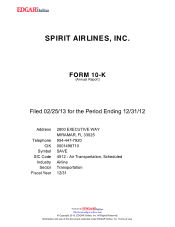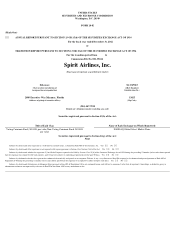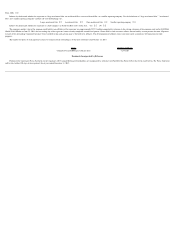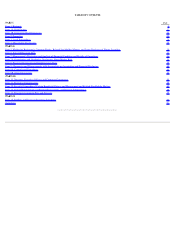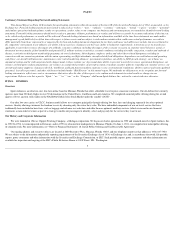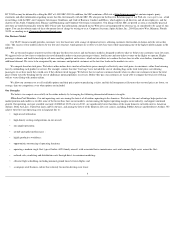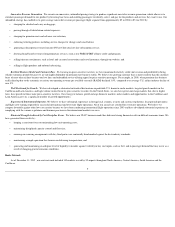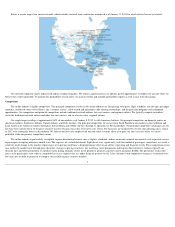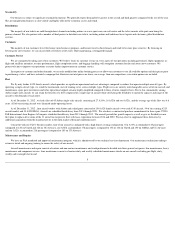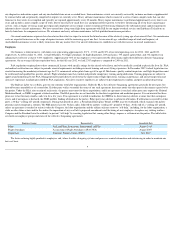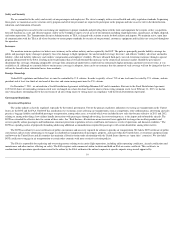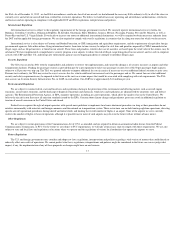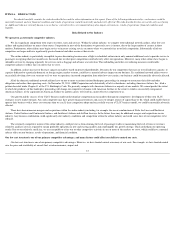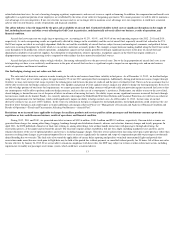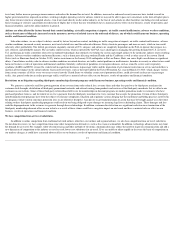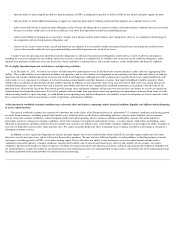Spirit Airlines 2012 Annual Report Download - page 8
Download and view the complete annual report
Please find page 8 of the 2012 Spirit Airlines annual report below. You can navigate through the pages in the report by either clicking on the pages listed below, or by using the keyword search tool below to find specific information within the annual report.
Below is a route map of our current network, which includes seasonal routes and routes announced as of January 31, 2013 for which service has not yet started:
Our network expansion targets underserved and/or overpriced markets. We utilize a rigorous process to identify growth opportunities to deploy new aircraft where we
believe they will be profitable. To monitor the profitability of each route, we analyze weekly and monthly profitability reports as well as near term forecasting.
Competition
The airline industry is highly competitive. The principal competitive factors in the airline industry are fare pricing, total price, flight schedules, aircraft type, passenger
amenities, number of routes served from a city, customer service, safety record and reputation, code-sharing relationships, and frequent flier programs and redemption
opportunities. Our competitors and potential competitors include traditional network airlines, low-cost carriers, and regional airlines. We typically compete in markets
served by traditional network airlines and other low-cost carriers, and, to a lesser extent, regional airlines.
Our single largest overlap, at approximately 60% of our markets as of January 8, 2013, is with American Airlines. Our principal competitors on domestic routes are
American Airlines, Southwest Airlines, United Airlines, and Delta Airlines. Our principal competitors for service from South Florida to our markets in the Caribbean and
Latin America are American Airlines through its hub in Miami and JetBlue Airways through its operations in Fort Lauderdale. Our principal competitive advantages are our
low base fares and our focus on the price-sensitive traveler who pays his or her own travel costs. These low base fares are facilitated by our low unit operating costs, which
in 2012 were among the lowest in the industry. We believe our low costs coupled with our non-ticket revenues allow us to price our fares at levels where we can be
profitable while our primary competitors cannot.
The airline industry is particularly susceptible to price discounting because, once a flight is scheduled, airlines incur only nominal incremental costs to provide service
to passengers occupying otherwise unsold seats. The expenses of a scheduled aircraft flight do not vary significantly with the number of passengers carried and, as a result, a
relatively small change in the number of passengers or in pricing could have a disproportionate effect on an airline’
s operating and financial results. Price competition occurs
on a market-by-market basis through price discounts, changes in pricing structures, fare matching, target promotions and frequent flier initiatives. Airlines typically use
discount fares and other promotions to stimulate traffic during normally slower travel periods to generate cash flow and to maximize RASM. The prevalence of discount
fares can be particularly acute when a competitor has excess capacity that it is under financial pressure to sell. A key element to our competitive strategy is to maintain very
low unit costs in order to permit us to compete successfully in price-sensitive markets.
7

